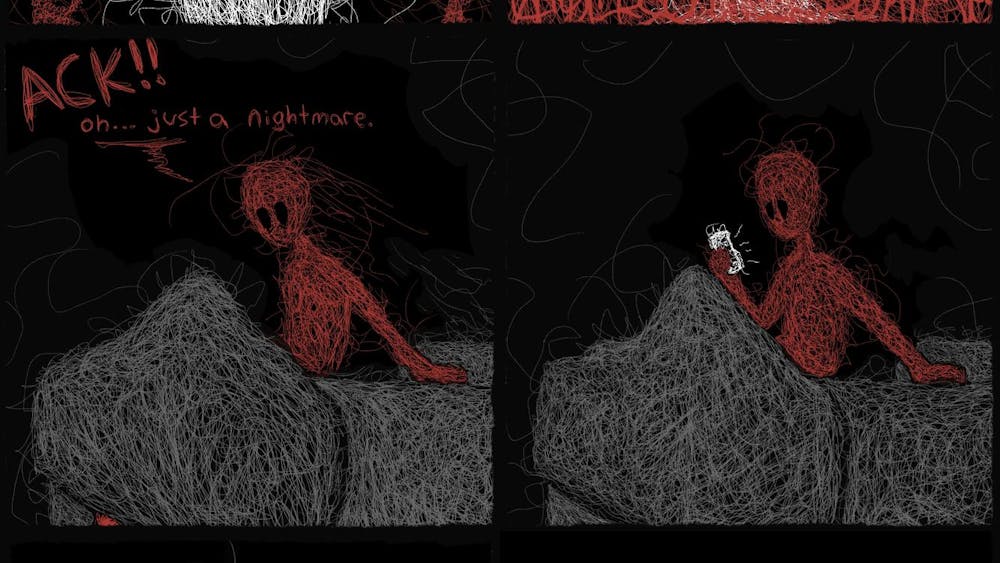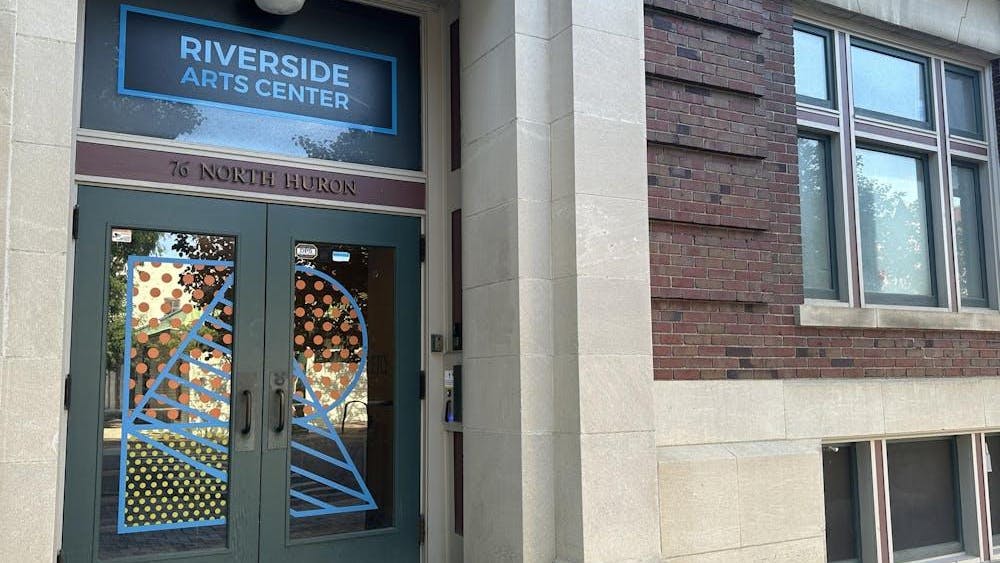Larry “Pun” Plamondon has lived a life full of what he calls “political content.” A big player in the counter-culture of the ‘60s and ‘70s, the 64 year old is remarkably frank about his infamy, which included a stint on the FBI’s Ten Most Wanted list.
Since then, he has reconnected with his Ottawa heritage. Plamondon now travels, telling traditional stories and speaking of his experiences.
In his lecture Tuesday, held by the Native American Student Organization for Native American Heritage Month, he could not help but tell one of his greatest stories – his own.
“I was born in a mental hospital” Plamondon begins.
He was adopted by a Traverse City Catholic family while a baby. His childhood was “troubled,” he said. “I was that kid always getting kicked off the bus.” Eventually he was sent to a Catholic Reform School.
After returning, Plamondon ran away and embarked on his “hitchhiking adventures.” For a short time, he worked as a union organizer for the AFL-CIO, where he was first exposed to the politics of inequality. He heard of labor struggles, such as those of Cesar Chavez, and he heard of apartheid. During this time he achieved a “focused anger.”
“I didn’t hate everybody, I hated the government,” he said.
After his union days, he resumed hitchhiking. This time, he traveled through the heart of the Civil Rights movement. While he didn’t actively participate, he says, “I saw the signs” – the white-only signs. He would speak about the injustice but said, “I was quite ineffective.” He recognized un-organized and alone, he couldn’t effectively bring about change.
Plamondon then returned to Michigan in 1967, where he joined a Beatnik urban commune located in an old dentist’s office in Detroit. The commune was called the Detroit Artist Workshop, and was composed of “poets, writers . . . and lunatics of every description.”
During this time, Plamondon was first arrested for marijuana distribution. While in jail, he would receive underground newspapers. One paper contained an interview with Huey Newton, co-founder of the Black Panther Party. Plamondon was particularly impressed with the community service aspects of the party. At the end of the article, the interviewer asked what white people could do to support the Black Panther’s cause, and Newton said “form a White Panther Party.”
So Plamondon did, when he was released from jail. In forming this party, he was influenced by the community-building activities of the Black Muslim community in Detroit, and the theatrical protests of activists like Jerry Rubin and Abbie Hoffman.
In 1968, a CIA office in Ann Arbor was bombed. After a year-long investigation, Plamondon was indicted for the crime. He heard about the indictment on the radio and fled to Algeria. This is when he gained one of his most infamous accomplishments – a spot on the FBI’s Ten Most Wanted list.
While in political asylum in Algiers, Plamondon appreciated its revolutionary climate. He recalls that abandoned storefronts would be filled with government displays on everything from the importance of literacy to hygiene practices. Plamondon liked how the government was full of vitality and “addressing the needs of the people.” However, he found the overall atmosphere too alien, and returned to America.
He was eventually caught and placed in maximum security in the Wayne County Jail. His trial was taken up by the defenders of the “Chicago 7.” They managed to get a hold of the wiretaps used to indict Plamondon, which were eventually found illegal by a Supreme Court ruling.
After his case was ruled out, he returned to the White Panthers, changing its name to the less militant “Rainbow Peoples Party.” However, financial problems ensued, Plamondon and his friend “The Cheeseburger” were charged for another marijuana crime, and the party eventually fell apart.
After the end of the White Panthers, Plamondon worked briefly at a film co-op and then drove a semi-truck, mostly for KISS and Bob Seger. He eventually worked as security officer for the tour.
“It was fun,” Plamondon said about his role, “I got to wear the sunglasses and look stern.” However, his alcoholism and drug use eventually led to his dismissal.
He met his wife working at a summer camp on the west side of the state in 1980. She had formerly worked at a methadone clinic and confronted Plamondon about his alcoholism. He found no comfort from 12-step meetings – they told him he had to find a higher power, which he could not find in the structured Catholicism of his upbringing.
The power he eventually found was the “Great Mystery” of Native American belief. While being interviewed for the Detroit Free Press, he met the reporter’s husband, Lewis. Lewis showed him his medicine bundle and invited Plamondon to smoke a pipe with him.
During this traditional Native American ceremony, Plamondon remembers “I got a physical reaction.” Plamondon decided he could believe in the “Great Mystery,” often referred to as the “Great Spirit.” Since then, he has returned to the Native American beliefs of his biological parents and is active in his tribe and throughout Michigan as a traditional storyteller.
Plamondon has recently released a self-published autobiography, “Lost From the Ottawa – the Story of the Journey Back.”
He published it in indie style, reminiscent of his hippie days in the ‘60s and ‘70s.









